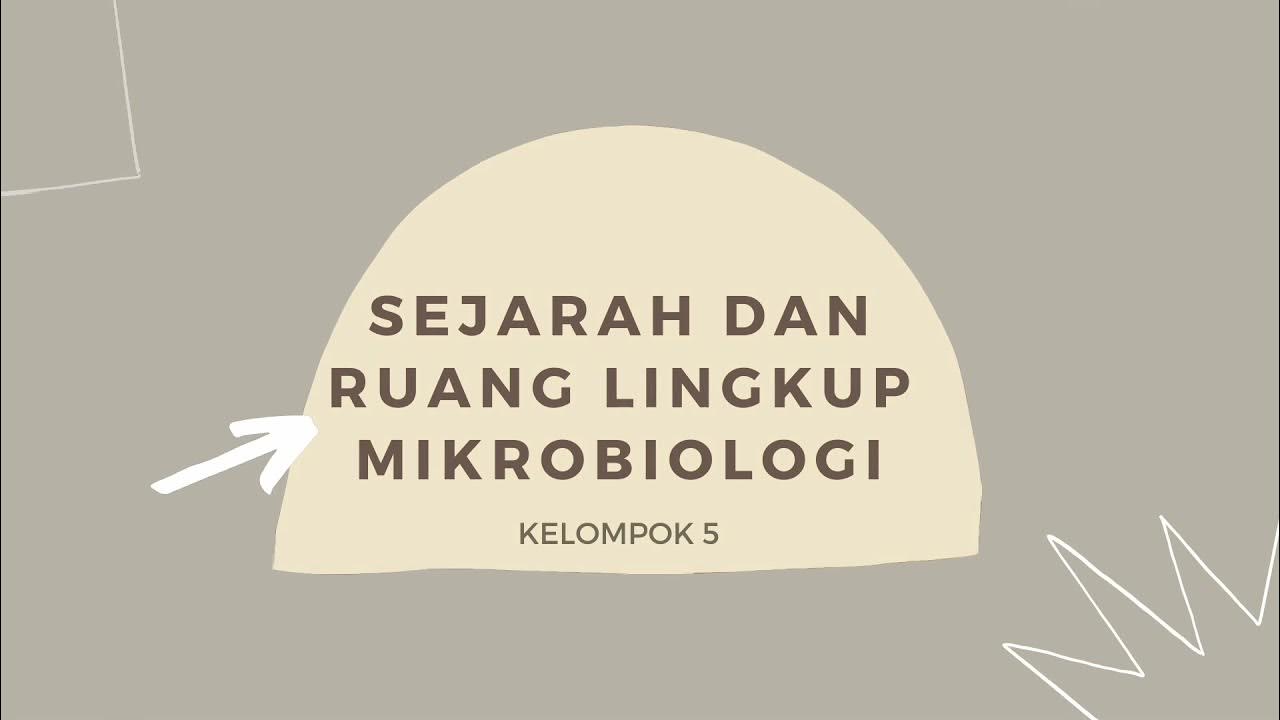Persiapan OSN 2024 Bahas Soal BIOLOGI Sel Molekuler, Mikrobiologi & BioteknologiBakteri
Summary
TLDRThis educational video provides an insightful overview of microbiology, specifically focusing on bacteria. It explains the structure and functions of bacteria, including their role in both beneficial and harmful processes. The video highlights the differences between Gram-positive and Gram-negative bacteria, particularly how their cell wall thickness affects their reaction to Gram staining. The explanation of bacterial characteristics, such as their microscopic size, lack of a membrane-bound nucleus, and ability to adapt, is also covered. The script aims to make complex concepts accessible and encourages viewers to engage with the material for deeper learning.
Takeaways
- 😀 Bacteria are unicellular organisms that can only be seen under a microscope.
- 😀 Bacteria have simple structures consisting of a cell membrane, cytoplasm, and genetic material (DNA).
- 😀 Some bacteria possess flagella, which help them move, but not all bacteria have this feature.
- 😀 Bacteria play both positive and negative roles in our lives, such as aiding in decomposition and food production, but some can cause diseases.
- 😀 Positive bacteria help break down organic material and assist in the production of food items like cheese and yogurt.
- 😀 Negative bacteria are pathogenic and can cause diseases such as throat infections, tetanus, and more.
- 😀 Bacteria are typically microscopic, ranging in size from 0.5 to 5 micrometers.
- 😀 Bacteria lack a membrane-bound nucleus (prokaryotic) and have a cell wall that provides structure.
- 😀 Bacteria reproduce by binary fission and can adapt quickly to environmental changes.
- 😀 Bacteria are classified into Gram-positive and Gram-negative types based on their reaction to Gram staining, with differences in their cell wall structure.
- 😀 Gram-positive bacteria have a thicker peptidoglycan layer that retains the violet stain during Gram staining, whereas Gram-negative bacteria have a thinner layer and appear red or pink after the stain is applied.
Q & A
What is the basic definition of bacteria?
-Bacteria are unicellular microorganisms that can only be seen with the help of a microscope. They have a simple structure consisting of a cell membrane, cytoplasm, and DNA, and are an essential part of microbiology.
How does the structure of bacteria differ from other organisms?
-Bacteria are unicellular and prokaryotic, meaning they lack a nucleus. Their structure is simpler than that of eukaryotic cells, which have membrane-bound organelles.
What is the role of flagella in bacteria?
-Flagella are tail-like structures that some bacteria use to move. Not all bacteria have flagella, but they serve as a means of locomotion for those that do.
What are some positive roles of bacteria in the environment?
-Positive bacteria help decompose organic matter, assist in the production of food products like cheese and yogurt, and play an essential role in recycling nutrients in ecosystems.
What are some examples of harmful bacteria?
-Harmful bacteria, or pathogens, can cause diseases such as throat infections, tetanus, and other infectious diseases.
What is the difference between Gram-positive and Gram-negative bacteria?
-Gram-positive bacteria have thick cell walls made of peptidoglycan, which retain the violet stain in Gram staining. Gram-negative bacteria have thinner cell walls and stain pink or red instead, due to their lack of a thick peptidoglycan layer.
Why do Gram-positive and Gram-negative bacteria react differently to Gram staining?
-The difference in reaction is due to the thickness of their cell walls. Gram-positive bacteria retain the violet stain because of their thick peptidoglycan layer, while Gram-negative bacteria do not, leading to a pink or red color after staining.
What is the significance of the peptidoglycan layer in bacteria?
-The peptidoglycan layer provides structural integrity to the bacterial cell wall. In Gram-positive bacteria, it is thick and helps retain the crystal violet stain during Gram staining, whereas in Gram-negative bacteria, it is thin and does not hold the stain.
How do bacteria reproduce?
-Bacteria reproduce by binary fission, a process where a single bacterial cell divides into two identical daughter cells.
What impact does bacterial adaptation have on human health?
-Bacteria's ability to rapidly adapt to environmental changes, such as temperature or antibiotics, makes them resilient. Some can become resistant to treatment, which complicates efforts to control bacterial infections.
Outlines

Cette section est réservée aux utilisateurs payants. Améliorez votre compte pour accéder à cette section.
Améliorer maintenantMindmap

Cette section est réservée aux utilisateurs payants. Améliorez votre compte pour accéder à cette section.
Améliorer maintenantKeywords

Cette section est réservée aux utilisateurs payants. Améliorez votre compte pour accéder à cette section.
Améliorer maintenantHighlights

Cette section est réservée aux utilisateurs payants. Améliorez votre compte pour accéder à cette section.
Améliorer maintenantTranscripts

Cette section est réservée aux utilisateurs payants. Améliorez votre compte pour accéder à cette section.
Améliorer maintenantVoir Plus de Vidéos Connexes

Struktur dan Fungsi Komponen Sel Bakteri (Sel Prokariot)

Introdução à MICROBIOLOGIA | Videoaula | Flavonoide #1

Ruang Lingkup dan Sejarah Mikrobiologi

Sejarah MikroBiologi | Bagian Pertama | RPS Tatap Maya 🔬 ⚗️ #mikrobiologi

An Introduction to Microbiology 🧫

Medical Microbiology: Gram positive & Gram Negative bacteria | external structure of each.
5.0 / 5 (0 votes)
